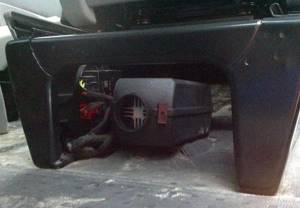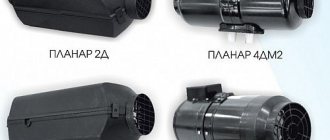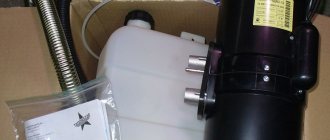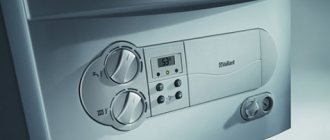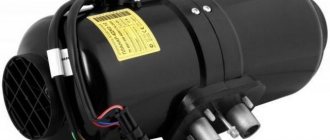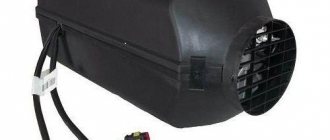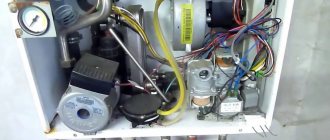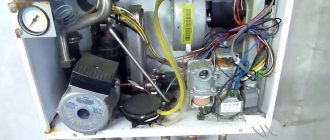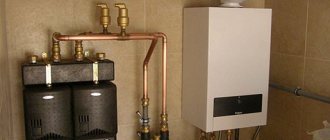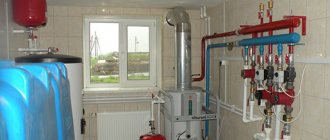Planar service error codes
Errors Planar 4DM, 4DM2 (3 kW), 2D (2 kW), 8D
Below we have collected for you all the error codes for all autonomous heaters of the Planar series. With their help, you can preliminarily determine the breakdown and even fix it on your own, but in some cases you may still have to contact us at the service center for a more accurate diagnosis and save your finances from unnecessary expenses. (If you get the error “candle” or “pump”, do not rush to buy them; first you need to make sure that they are the reason.)
Malfunctions that occur during heater operation are coded and automatically displayed on the control panel indicator. In this case, the fault code and the operating mode LED will flash rarely.
! If you did not find your code in this table, then with a high degree of probability, it is not a code, but the firmware version of the remote control (for digital remote controls). In this case, you need to check the power supply to the heater; the firmware version appears immediately after connecting the power.
Unlocking Planar-8DM. Reset 33 lock codes.
** Attention! If during startup or operation of the heater the “Overheating” is repeated 3 times in a row, the heater will be blocked.
Blocking is carried out upon overheating, regardless of the sensors that recorded errors. In case of blocking, code 33 will be displayed on the control panel.
To unlock the heater, you must first find out what year it was produced: For the first version of heaters produced (01.2014 - 03.2015), the lock can only be reset using a special program installed on the computer or in our service center.
For the second version of heaters produced (03.2015 – current time), the lock can be reset in two ways: 1) Using a special program. 2) On your own.
Algorithm for resetting the lock WITHOUT using a computer:
■ Connect the product to the power source, start the product, wait for code 33 to appear. ■ After the code appears, within 30 seconds you must disconnect the power connector on the harness or disconnect the power from the heater in any other way. ■ Repeat this procedure 3 times in a row.
If you do not disconnect the power connector within 30 seconds, you will need to start the whole procedure over again. After 3 power resets the heater will be unlocked.
Source
Operating manual for the Planar heater
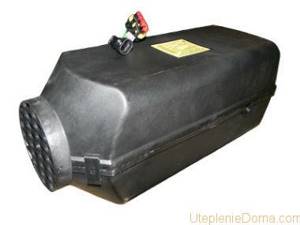
According to reviews, Planar is a reliable device.
It would seem that there is nothing difficult about how to maintain the device in good condition. But that's not true. The Planar heater, reviews of which are largely positive, has a long service life. But it cannot be used for a long time if it is not properly cared for. The device loves high speeds. You should turn on maximum power whenever possible.
It is recommended to install an additional fuel tank. When starting up for the first time and after using up the entire supply of gasoline or diesel, it is worth pumping it up to the very tank. Before installation, you should initially assemble all the electrical elements into one system, and then connect the device to the power supply. If you break this sequence, you can immediately head to the store for a new heating device.
Various models of heaters, for example, Planar 2d12, have positive reviews. This speaks volumes about the quality of the products. If you follow the recommendations of specialists regarding operation, the device is guaranteed to last a long time, while ensuring optimal temperature in the cabin. When for any reason the heater fails, it is better to seek help from a specialist. This will allow you to quickly repair a device that has a serious malfunction.
List of sources
- StrojDvor.ru
- utepleniedoma.com
Design and operating principle of 14TS-10
The 14TS 10 device is a special device built into a break in the circuit of the engine liquid cooling system. Structurally, it consists of a housing in which a combustion chamber, a built-in heat exchanger and an electric pump are located. Switching on and monitoring the operation of the heater is carried out by a control unit with a remote control. The heater is connected to the fuel system and on-board electrical network of the vehicle.

When fuel burns in the heater chamber, heat is released, which is transferred to the heat exchanger. The liquid passing through it is heated and, with the help of a built-in pump, circulates in the engine water cooling system.
The camera operation process is controlled by a combustion indicator. Having reached the specified heating temperature limit (80°C), combustion stops and the device begins to cool down. The heated liquid continues to circulate in the system.
Automatic operation of the 14TC-10 is carried out according to one of the selected programs: economical or pre-start. In the first case, the operating cycle lasts 8 hours at low power, in the second, heating occurs in 3 hours at maximum power.
Basic operating modes of 14TS-10
Using the regulator on the remote control, you can select one of three possible operating modes of the device, regulated by the control unit:
If the temperature drops to 55°C, the device automatically switches to the “Full” mode during the pre-start or “Medium” mode during the economical program.
The unit carries out preliminary and current diagnostics of 14TS-10, as well as control of specified operating modes. Using the remote control, the device is turned on, operating modes are selected and its parameters are controlled.

Error codes and methods for eliminating them
A characteristic feature of the 14TS-10 device is the ability for the operator to independently diagnose emerging problems by flashing the LED located on the control panel.
When the heater is started and functioning normally, the LED lights up constantly. When disabled, the LED does not light up. If the device does not turn on, you need to check the supply of fuel and power through the 5A and 25A fuses.
If any malfunction occurs during operation of the device, the LED begins to blink a certain number of times. By the number of flashes (from 1 to 10), the operator can determine the specific problem and how to solve it, guided by the following table:
Operating the device
When using this device for autonomous heating, it is necessary to follow some rules in order to increase the service life of the product and achieve a high level of safety. The following discusses the most important points that need to be taken into account during operation.
Safety precautions
- The heater may only be used for the purposes specified in this operating manual.
- Do not use the device in places where vapors that are easily flammable accumulate in large quantities.
- The device should not be used if the vehicle is indoors, as combustion products will accumulate.
- Do not disconnect or connect connectors while the electrical power of the product is turned on.
- After the heater is turned off, restarting can only be done after 5-10 seconds.
- When refueling a vehicle, the device must be turned off.
- Do not turn off the power supply until the purge phase is completed.
The heater can be installed in a van.
Errors Planar 4DM2-12-S / 4DM2-24-S
| Flame interruption in “FULL” operating mode. | Check the air intake, gas exhaust pipe and fuel supply, eliminate faults, replace the fuel pump and flame indicator if necessary. | |
| 09 | Faulty glow plug. | Check the glow plug and replace the glow plug if necessary. |
| 10 | Air blower motor malfunction. | Check the electrical wiring of the electric motor. Eliminate the malfunction and, if necessary, replace the air blower. |
| 12 | Shutdown, increased voltage more than 30.8 V. | This defect is possible when the heater is turned on while the car engine is running. The cause may be a faulty vehicle voltage regulator. |
| 13 | Startup attempts exhausted. | If the permissible number of starting attempts has been used, check the quantity and supply of fuel. Check the air intake and exhaust pipe. Check the spark plug. |
| 14 | Malfunction of the circulation pump (pump). | Check the electrical wires of the circulation pump for short circuits and breaks, check the pump and replace if necessary. |
| 15 | Shutdown, undervoltage less than 20 V. | Check the battery, vehicle voltage regulator and supply wiring. |
| 16 | Ventilation time exceeded. | The heater is not cooled sufficiently during purging. Check the air intake and exhaust pipe. Check the flame indicator and replace if necessary. |
| 17 | Fuel pump malfunction. | Check the fuel pump electrical wires for short circuits and breaks, check the fuel pump and replace if necessary. |
| 18 | Car fan relay malfunction. | Check the electrical wires of the relay, eliminate the short circuit, and replace the relay if necessary. |
| 19 | Flame interruption in “MEDIUM” mode. | Check the air intake, gas exhaust pipe and fuel supply, eliminate faults, replace the fuel pump and flame indicator if necessary. |
| 20 | There is no connection between the control unit and the timer. | Check the 5 A fuse. Check the circuits and contacts. |
| 23 | Voltage less than 21.6 V (Warning). | It is necessary to turn off the operating heater and charge the battery. |
| 25 | The heater is blocked from subsequent starts after three consecutive starts during which the heater did not start. | The blocking is removed by disconnecting the heater from the battery. Check the glow plug. Check the mesh and the hole in the combustion chamber for carbon formation. See also code 17. |
| Code | Number of LED flickers | Problem | Reason for error |
| 13 | 2 | The device does not start after two attempts. | There is no fuel in the tank. The quality of the fuel does not meet the conditions of use in cold weather. |
The air intake or exhaust pipe is dirty.
Poor heating of the glow plug, failure of the control unit.
The impeller is in contact with the volute in the air blower, due to which insufficient air is supplied.
Contamination of the hole in the combustion chamber (diameter - 2.8 mm). Contamination of the spark plug grid or incorrect installation in the fitting (not all the way).
Planar heater: the main advantages of its use
Among car owners, especially truckers who spend most of their time on the road, the planar heater deservedly receives a lot of positive feedback. Domestic development, in comparison with imported analogues, is reliable, but less expensive.
A large number of positive characteristics include:
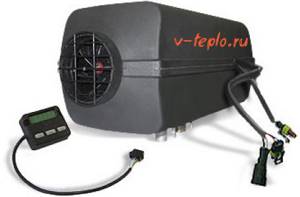
By running air vent pipes into the cargo compartment, you can heat the entire car, and not just the driver’s cabin. Even at significantly low temperatures (less than -20 degrees), their efficiency remains at a very high level. Fuel and battery life are economically consumed. Sufficient power indicator. Unlimited operating time of the installation.
Planar heaters are widely used in vehicles used for transporting medicines, drinks, animals, process liquids, etc. They are actively used by drivers of cougars, cranes and other special equipment.
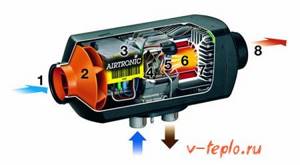
To use the Planar heating unit, there is no need to start the car engine. This makes it possible to continue to use it during the night.
There are several models offered on the market, each of which is characterized by its own characteristics. However, the most popular among them is the Planar-4dm 24 model. Its installation is possible not only in large vans, but also in change houses, booths, etc. During operation, the heating device makes virtually no noise.
Webasto Air Top 2000/3500/5000 ST 12/24
If AT 2000/3500/5000 ST air heaters are equipped with a standard or combi timer, then after locking, a fault code will appear on the screen.
If the heater is equipped with a switch as a control element, then a fault code is issued after the heater is turned off in the form of a flashing operating indicator light on the switch (blink code).
After 5 short signals, long pulses are issued - the number of these pulses for various faults corresponds to the number after the letter F in the table below.
| 20 | The device does not start. | There is no connection between the remote control and the control unit. | |
| 01 | 1 | Exceeding the permissible temperature. | The temperature sensor sends a signal to turn off the autonomy. The heat exchanger in the area where the sensor is installed has reached a temperature of over 250?C. |
| 08 | 3 | The flame breaks out during operation. | Leaks in the fuel supply line, failure of the fuel pump or flame indicator. |
| 09 | 4 | Glow plug problems. | Broken or short circuited wiring, failure of the control unit. |
| 05 | 5 | Flame indicator is broken. | A break in the electrical wiring or a short circuit to ground (housing) of the indicator. |
| 04 | 6 | Error in temperature sensor in control unit. | Failure of the temperature sensor (located in the control unit, replacement is not possible). |
| 17 | 7 | Fuel pump error. | Open or short circuit in the electrical circuit of the fuel pump. |
| 12 | 9 | Shutdown, voltage exceeds 16 V (above 30 V for 24 V device). | Failure of the battery or voltage regulator. |
| 15 | 9 | Shutdown, voltage below 10V (below 20V for 24V device). | Failure of the battery or voltage regulator. |
| 10 | 11 | The electric blower motor does not reach the required speed. | Electric motor failure. Lack of lubrication in the bearings or contact of the impeller with the volute in the supercharger. |
| 16 | 10 | Ventilation is too weak to reduce the temperature of the heat exchanger and combustion chamber of the device. | During the purging process before starting work, the flame indicator is not cooled to the required value. Malfunction of the flame indicator, control unit or air blower. |
| 27 | 11 | The motor does not turn. | Jamming as a result of destruction of the rotor, bearing, or the ingress of various objects. |
| 28 | 11 | The engine rotation speed does not change, it does not respond to control commands. | Failure of the electrical motor control board or control unit. |
| 02 | 12 | Possibility of overheating based on temperature sensor. Its temperature exceeds 55°. | Before starting, during purging for 5 minutes there is not enough cooling or the control unit overheats during operation. |
| Code | Possible causes of malfunction |
| F00 | The control unit is faulty. |
| F01 | 2 unsuccessful start attempts or no flame is formed. |
| F02 | Flame break (repeated more than 3 times). |
| F03 | Voltage drop below permissible or increase above permissible. |
| F04 | Premature flame detection. |
| F05 | Open circuit or short circuit of the flame sensor (Air Top 2000 ST gasoline only). |
| F06 | Open circuit or short circuit of the temperature sensor. |
| F07 | Open circuit or short circuit of the dosing pump. |
| F08 | Open circuit or short circuit of the blower motor, overload or blockage of the blower impeller. |
| F09 | Open circuit or short circuit of the glow pin. |
| F10 | The heater has overheated. |
| F11 | Open circuit or short circuit of the heating limiter. |
| F12 | Heater blocking: remove the fuse and insert it back. |
| F14 | Incorrect position of the overheating sensor. |
| F15 | Open circuit or short circuit of the potentiometer on the control. |
Model range of devices
The model range includes 4 devices - 2D, 4 DM, 44D and 8 DM.
Planar 2D and 4DM errors
Error codes Planar, 3 kW dry hair dryer 2D have the following meanings:
- E 01 - overheating has occurred in the heat exchanger: a signal is received that the device should be turned off, since the temperature is above +250°C.
- E 02 - control unit t above +55°C.
- E 05 - the sensor does not work. The cause may be a broken wiring or a short circuit in the housing.
- E 06 - failure in the temperature sensor of the control system. It cannot be replaced.
- E 09 - spark plug failure: a short circuit has occurred or the control unit has turned off.
- E 10 - the engine cannot reach the required speed: there is strong friction in the bearings or in the discharge section the volute is touched by the impeller.
- E 12 - shutdown due to high voltage (30 V).
- E 13 - the mechanism does not start: the hole in the combustion chamber or the spark plug grid is clogged.
- E 15 - shutdown due to low pressure (20 V).
- E 16 - the sensor did not have time to cool down before starting.
- E 17 - pump malfunction due to broken wiring or short circuit.
- E 20 - the heater cannot start due to blown fuses in the power supply or there is no connection between the unit and the control panel.
- E 27 - the engine is jammed, it does not rotate due to the destruction of the rotor or bearing.
- E 28 - the engine cannot be controlled. Reason: failure of the control unit and/or board.
- E 29 - the flame is interrupted during operation: the tightness of the fuel line is broken, the indicator or pump is broken.
- E 78 - flame failure. Reasons: air has entered the system, there is a breakdown in the pump or problems with the indicator.
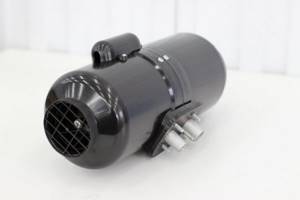
Codes Planar 4D and its modifications:
- E 13 - the mechanism does not start. Reasons: the fuel has run out or is of poor quality, the pipeline is clogged, the spark plugs are poorly heated, the opening of the combustion chamber is clogged.
- E 01 - overheating: t in the heat exchanger is above +250°C.
- E 08 - the flame is interrupted: malfunction of the pump, indicator, leakage of the fuel line.
- E 09 - spark plug problems: breakage, short circuit, control unit problems.
- E 05 - flame indicator does not work: short circuit or broken wiring.
- E 04 - temperature sensor malfunction.
- E 17 - the fuel pump has a malfunction.
- E 12 - high voltage more than 30 V.
- E 15 - voltage less than 20 V.
- E 10 - the electric motor does not gain speed: there is strong friction between the bearings.
- E 16 - insufficient ventilation of the cooling chamber: malfunction in the control unit, malfunction of the air blower or flame indicator.
- E 27 - the engine is standing still: the bearings or rotor have become unusable.
- E 28 - independent uncontrolled rotation of the engine: overheating of the power supply.
- E 02 - sensor t is greater than +55°C.
Heater malfunctions 8 DM
Error codes for the Planar 8 DM hair dryer have the following meanings:
- E 01 - t in the heat exchanger +250°C.
- E 02 - sensor overheating.
- E 04 or 06 - temperature sensor malfunction.
- E 05 - the flame indicator does not work due to a broken wiring or short circuit in the housing.
- E 08 - the flame is interrupted in operating mode.
- E 09 - problems with glow plugs.
- E 10 - no required engine speed.
- E 12 - shutdown due to overvoltage.
- E 13 - the heater does not start: there is a blockage in the chamber fitting or gas outlet, the fuel has run out.
- E 15 - shutdown due to low voltage.
- E 17 - the fuel transfer pump is faulty.
- E 20 - there is no connection between the sensor and the control panel.
- E 27 - due to oxidation of the contacts, the engine stopped rotating.
- E 28 - the bearing is jammed, the engine is uncontrollable.
- E 29 - the flame is interrupted from time to time: there is a problem with the board or sensor.
- E 30 - there is no signal between the sensor and the control panel.
- E 78 - flame failure.
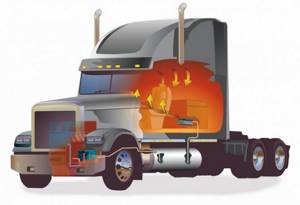
Autonomous "Planar" is an air heater developed by Russian specialists, the production of which is carried out in Samara. The model range of these car heaters consists of four devices (Planar 2D, Planar 4DM2, Planar 44D, Planar 8DM), each of which is available in two versions - 12 and 24 Volts. Even in severe frosts, such an installation can ensure optimal air temperature in the car interior. First, we will briefly consider the design and operating principle of the heater, and then we will study all the “Planar” errors (fault codes) and their interpretation.
Specifications
Let's consider the popular model 4DM 12 24. This is also a Planar autonomous vehicle. Its price is 19,400 rubles. The device is a diesel autonomous heater. The device has the following technical characteristics.
Thus, the level of heat production is 3 kW in active mode, and 1 kW in low mode. Fuel consumption in active mode is 0.36 l/h. In low mode, the device consumes up to 0.12 l/h. Power consumption – up to 30 W. Injected air – 120 m3/h. The supply voltage is 12 and 24 V. All these characteristics were measured at rated supply voltages and a temperature of 20 degrees. There may be a slight measurement error.
Advantages and disadvantages
The device can work autonomously when the car engine is turned off
The Planar heater helps out many drivers. Truckers, bus drivers, and travelers are forced to spend a lot of time in the car cabin. In the cold season, heating the interior due to engine operation is insufficient. Planar solves this problem.
Advantages of the device:
- In an hour, the heater, depending on its power, heats from 34 to 120 cubic meters. m. air.
- The planar is economical - with such high efficiency it consumes no more than 29–42 W. The same volume of heated air requires from 0.24 to 0.37 liters of diesel fuel per hour.
- Planar is effective at very low temperatures outside – below -20 C.
- The installation works without time restrictions. Automatically turns off when the specified temperature is reached and turns on when it drops. You can turn off the device manually.
- The device is safe. If it rolls over, has a weak flame, the flame goes out, or there is an interruption in the air or fuel supply, the Planar turns off.
- Noise level is low.
- If you connect air exhaust pipes, warm air can be directed not only into the cabin, but also into the bus interior or into the cargo compartment if the cargo being transported requires a certain temperature regime.
- The device operates autonomously from the car engine. This is a convenient option for spending the night in the car, as the Planar can heat the cabin all night long.
There are no disadvantages. Autonomous car heater Planar fully corresponds to its purpose.
Monitoring and control system
Using the control unit you can regulate the amount of heat
The Planar heater operates in several modes. Operational safety, adjustment and diagnostics of systems are ensured by sensors and a control unit.
Control block
The module is housed in a housing and connected to executive units with switching loops. Its functions are as follows:
The control unit works together with the remote control.
Operating modes
The device simultaneously performs the function of interior ventilation
The autonomous air engine heater operates in 3 modes. However, use often depends on the model’s configuration:
Control panels
The remote control is installed on the dashboard or hung on a container in any place convenient for the driver. The device is connected to the device via a cable. The remote control is convenient because it regulates the operation of the Planar and serves as a diagnostic tool.
The heaters are equipped with different types of remote control:
By the number, color and behavior of LEDs, you can determine the cause of the problem and quickly eliminate it.
General signs of malfunction of Pramotronic liquid heaters
| Flame interruption in “FULL” operating mode. | Check the air intake, gas exhaust pipe and fuel supply, eliminate faults, replace the fuel pump and flame indicator if necessary. | |
| 09 | Faulty glow plug. | Check the glow plug and replace the glow plug if necessary. |
| 10 | Air blower motor malfunction. | Check the electrical wiring of the electric motor. Eliminate the malfunction and, if necessary, replace the air blower. |
| 12 | Shutdown, increased voltage more than 30.8 V. | This defect is possible when the heater is turned on while the car engine is running. The cause may be a faulty vehicle voltage regulator. |
| 13 | Startup attempts exhausted. | If the permissible number of starting attempts has been used, check the quantity and supply of fuel. Check the air intake and exhaust pipe. Check the spark plug. |
| 14 | Malfunction of the circulation pump (pump). | Check the electrical wires of the circulation pump for short circuits and breaks, check the pump and replace if necessary. |
| 15 | Shutdown, undervoltage less than 20 V. | Check the battery, vehicle voltage regulator and supply wiring. |
| 16 | Ventilation time exceeded. | The heater is not cooled sufficiently during purging. Check the air intake and exhaust pipe. Check the flame indicator and replace if necessary. |
| 17 | Fuel pump malfunction. | Check the fuel pump electrical wires for short circuits and breaks, check the fuel pump and replace if necessary. |
| 18 | Car fan relay malfunction. | Check the electrical wires of the relay, eliminate the short circuit, and replace the relay if necessary. |
| 19 | Flame interruption in “MEDIUM” mode. | Check the air intake, gas exhaust pipe and fuel supply, eliminate faults, replace the fuel pump and flame indicator if necessary. |
| 20 | There is no connection between the control unit and the timer. | Check the 5 A fuse. Check the circuits and contacts. |
| 23 | Voltage less than 21.6 V (Warning). | It is necessary to turn off the operating heater and charge the battery. |
| 25 | The heater is blocked from subsequent starts after three consecutive starts during which the heater did not start. | The blocking is removed by disconnecting the heater from the battery. Check the glow plug. Check the mesh and the hole in the combustion chamber for carbon formation. See also code 17. |
The coolant flow is too low because:
The liquid in the circuit gives off too little heat because:
The fuel tank is empty.
Pipelines are leaking, bent, or clogged.
There are large deposits of paraffin in the fuel filter, and the water is frozen.
The vent in the tank is closed.
The fuel lines on the heater are reversed.
The fuel filter is dirty.
Errors from the Easystart Select control
Automatic recognition is enabled.
EasyStart Select was disconnected from the power supply and then reconnected.
Heating device malfunction.
EasyStart Select malfunction.
Contact the service center.
Check the operation of the heater fuse and replace if necessary.
Contact the service center.
| Indication | Description | Recommendations for elimination |
| Wait for automatic recognition to complete. | ||
| Contact the service center. | ||
| The heater turns OFF – undervoltage. | ||
| No connection. | ||
| Temperature sensor break. | Contact the service center. |
Design and operating principle
The heater has a voltage regulator and a timer. Constant work in offline mode is possible. Ignition is started electronically only if all requirements are met and the components are in full working order, so there is no reason to worry about the safety of the design.
The main components of Planar:
The operating principle of the autonomous unit is to supply air from outside to the heating compartment. This air is heated by the energy generated by the combustion of fuel. The warm air is then released into the interior of the car, van or bus.

The planar consists of 3 main elements
Advantages of using air heaters:
In this video you will learn how the heater works:
Features and benefits
The “Planar” autonomous vehicle is manufactured in Samara at the “Advers” enterprise. The company is engaged in the production and sale of various climate control equipment, which is in great demand in Russia. The main advantage of the company's products is affordable prices and high quality equipment.

outside temperature
All products that are manufactured have the necessary certificates that fully confirm safety and compliance with quality standards. The Planar autonomous vehicle consumes a small amount of fuel during operation, which ensures a long period of use. Installation can be done independently. This allows you to save significantly.
